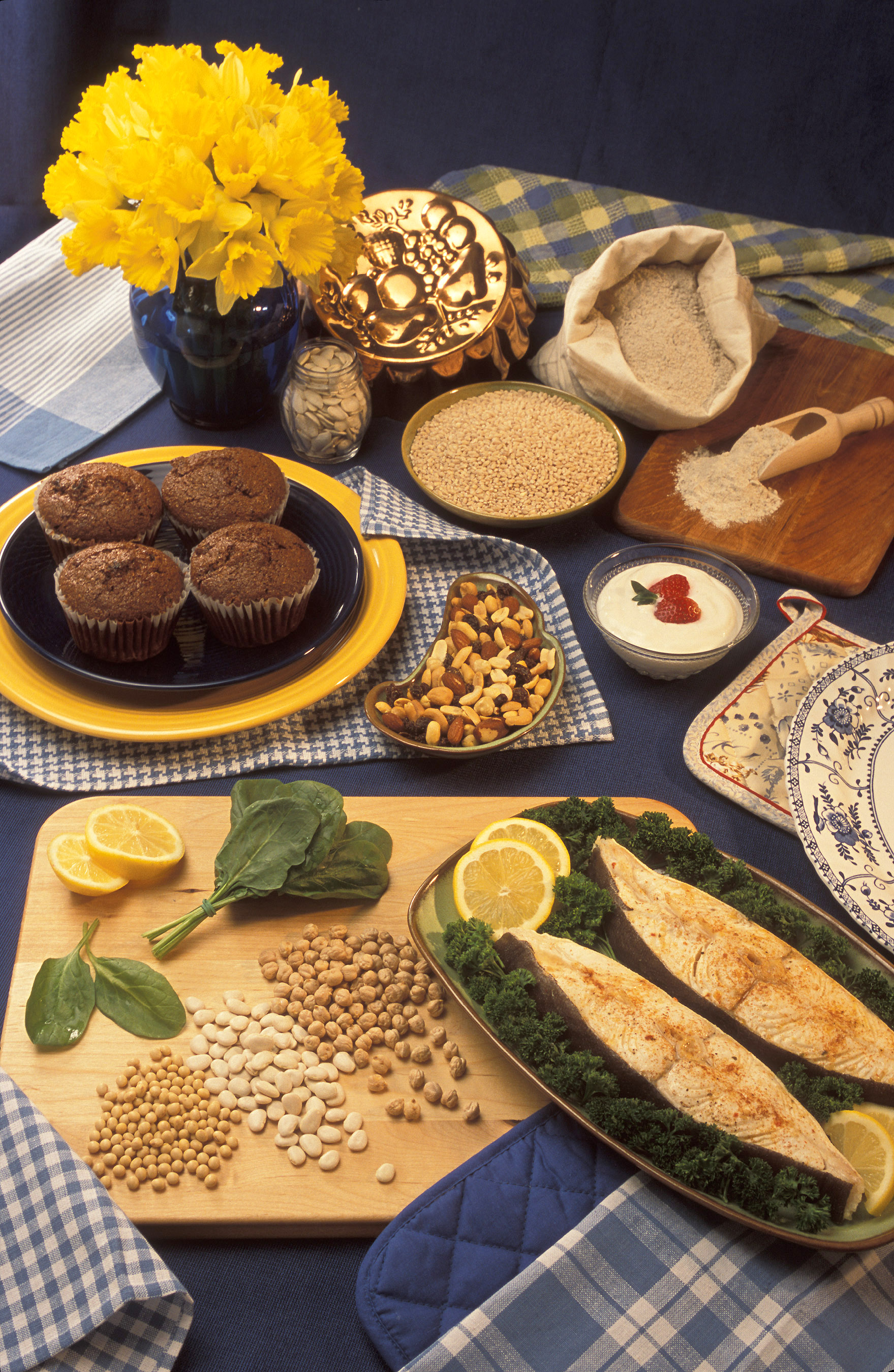|
Wilhelm Ebstein
Wilhelm Ebstein (27 November 1836, Jauer, Prussian Silesia – 22 October 1912) was a German physician. He proposed a low-carbohydrate high-fat diet to treat obesity. Ebstein's anomaly is named for him. Biography Ebstein was born to a Jewish family in Jauer, Prussian Silesia (modern Jawor, Poland).Hurst, J. Willis. (1995)''Portrait of a Contributor: Wilhelm Ebstein (1836-1912)'' ''Clinical Cardiology'' 18: 115-116. He studied medicine at the University of Breslau under Friedrich Theodor von Frerichs and at the University of Berlin under Rudolf Virchow and Moritz Heinrich Romberg,Wilhelm Ebstein @ graduating from the latter institution in 1859. During the same year he was named physician at the < ... [...More Info...] [...Related Items...] OR: [Wikipedia] [Google] [Baidu] |
Jawor
Jawor () is a town in south-western Poland with 22,890 inhabitants (2019). It is situated in the Lower Silesian Voivodeship. It is the seat of Jawor County, and lies approximately west of the regional capital Wrocław. One of the oldest towns in the region, with a history of more than a thousand years, Jawor was one of the main centers of weaving in Silesia and, in 1274–1392, the capital of an eponymous principality ruled by a local line of the Piast dynasty. It has a preserved medieval urban layout with several Gothic, Renaissance and Baroque structures, including the Church of Peace, a Historic Monument of Poland and UNESCO World Heritage Site. Jawor is the site for electrical machinery, chemical, paper and food industries, and there are numerous granite and basalt quarries near the town. Through the town flows the 31 mile long Raging Nysa river (pl: ''Nysa Szalona''). Etymology The name of the city ''Jawor'' comes from the Polish word for " sycamore maple." The earlie ... [...More Info...] [...Related Items...] OR: [Wikipedia] [Google] [Baidu] |
Obesity
Obesity is a medical condition, considered by multiple organizations to be a disease, in which excess Adipose tissue, body fat has accumulated to such an extent that it can potentially have negative effects on health. People are classified as obese when their body mass index (BMI)—a person's weight divided by the square of the person's height—is over ; the range is defined as overweight. Some East Asian countries use lower values to calculate obesity. Obesity is a major cause of disability and is Obesity-associated morbidity, correlated with various diseases and conditions, particularly cardiovascular diseases, type 2 diabetes, obstructive sleep apnea, certain types of cancer, and osteoarthritis. Obesity has individual, socioeconomic, and environmental causes. Some known causes are Western pattern diet, diet, low physical activity, automation, urbanization, quantitative trait locus, genetic susceptibility, medications, mental disorders, Economic policy, economic pol ... [...More Info...] [...Related Items...] OR: [Wikipedia] [Google] [Baidu] |
Metabolism
Metabolism (, from ''metabolē'', "change") is the set of life-sustaining chemical reactions in organisms. The three main functions of metabolism are: the conversion of the energy in food to energy available to run cellular processes; the conversion of food to building blocks of proteins, lipids, nucleic acids, and some carbohydrates; and the elimination of metabolic wastes. These enzyme-catalyzed reactions allow organisms to grow and reproduce, maintain their Structures#Biological, structures, and respond to their environments. The word ''metabolism'' can also refer to the sum of all chemical reactions that occur in living organisms, including digestion and the transportation of substances into and between different cells, in which case the above described set of reactions within the cells is called intermediary (or intermediate) metabolism. Metabolic reactions may be categorized as ''catabolic''—the ''breaking down'' of compounds (for example, of glucose to pyruvate by c ... [...More Info...] [...Related Items...] OR: [Wikipedia] [Google] [Baidu] |
Dietary
In nutrition, diet is the sum of food consumed by a person or other organism. The word diet often implies the use of specific intake of nutrition for health or weight-management reasons (with the two often being related). Although humans are omnivores, each culture and each person holds some food preferences or some food taboos. This may be due to personal tastes or ethical reasons. Individual dietary choices may be more or less healthy. Complete nutrition requires ingestion and absorption of vitamins, minerals, essential amino acids from protein and essential fatty acids from fat-containing food, also food energy in the form of carbohydrate, protein, and fat. Dietary habits and choices play a significant role in the quality of life, health and longevity. Health A healthy diet can improve and maintain health, which can include aspects of mental and physical health. Specific diets, such as the DASH diet, can be used in treatment and management of chronic conditions. Die ... [...More Info...] [...Related Items...] OR: [Wikipedia] [Google] [Baidu] |
Protein In Nutrition
Proteins are essential nutrients for the human body. They are one of the constituents of body tissue and also serve as a fuel source. As fuel, proteins have the same energy density as carbohydrates: 17 kJ (4 kcal) per gram. The defining characteristic of protein from a nutritional standpoint is its amino acid composition. Proteins are polymer chains made of amino acids linked by peptide bonds. During human digestion, proteins are broken down in the stomach into smaller polypeptide chains via hydrochloric acid and protease actions. This is crucial for the absorption of the essential amino acids that cannot be biosynthesized by the body. There are nine essential amino acids that humans must obtain from their diet to prevent protein-energy malnutrition and resulting death. They are phenylalanine, valine, threonine, tryptophan, methionine, leucine, isoleucine, lysine, and histidine. There has been debate as to whether there are eight or nine essential amino acids. The conse ... [...More Info...] [...Related Items...] OR: [Wikipedia] [Google] [Baidu] |
Carbohydrate
A carbohydrate () is a biomolecule composed of carbon (C), hydrogen (H), and oxygen (O) atoms. The typical hydrogen-to-oxygen atomic ratio is 2:1, analogous to that of water, and is represented by the empirical formula (where ''m'' and ''n'' may differ). This formula does not imply direct covalent bonding between hydrogen and oxygen atoms; for example, in , hydrogen is covalently bonded to carbon, not oxygen. While the 2:1 hydrogen-to-oxygen ratio is characteristic of many carbohydrates, exceptions exist. For instance, uronic acids and deoxy-sugars like fucose deviate from this precise stoichiometric definition. Conversely, some compounds conforming to this definition, such as formaldehyde and acetic acid, are not classified as carbohydrates. The term is predominantly used in biochemistry, functioning as a synonym for saccharide (), a group that includes sugars, starch, and cellulose. The saccharides are divided into four chemical groups: monosaccharides, disaccharides, ... [...More Info...] [...Related Items...] OR: [Wikipedia] [Google] [Baidu] |
Nutrition
Nutrition is the biochemistry, biochemical and physiology, physiological process by which an organism uses food and water to support its life. The intake of these substances provides organisms with nutrients (divided into Macronutrient, macro- and Micronutrient, micro-) which can be Metabolism, metabolized to create Food energy, energy and chemical structures; too much or too little of an essential nutrient can cause malnutrition. Nutritional science, the study of nutrition as a hard science, typically emphasizes human nutrition. The type of organism determines what nutrients it needs and how it obtains them. Organisms obtain nutrients by consuming organic matter, consuming inorganic matter, absorbing light, or some combination of these. Some can produce nutrients internally by consuming basic elements, while some must consume other organisms to obtain pre-existing nutrients. All forms of life require carbon, Biological thermodynamics, energy, and water as well as various other ... [...More Info...] [...Related Items...] OR: [Wikipedia] [Google] [Baidu] |
Göttingen
Göttingen (, ; ; ) is a college town, university city in Lower Saxony, central Germany, the Capital (political), capital of Göttingen (district), the eponymous district. The River Leine runs through it. According to the 2022 German census, the population of Göttingen was 124,548. Overview The origins of Göttingen lay in a village called ''Gutingi, ''first mentioned in a document in 953 AD. The city was founded northwest of this village, between 1150 and 1200 AD, and adopted its name. In Middle Ages, medieval times the city was a member of the Hanseatic League and hence a wealthy town. Today, Göttingen is famous for its old university (''Georgia Augusta'', or University of Göttingen, "Georg-August-Universität"), which was founded in 1734 (first classes in 1737) and became the most visited university of Europe. In 1837, seven professors protested against the absolute sovereignty of the House of Hanover, kings of Kingdom of Hanover, Hanover; they lost their positions, but ... [...More Info...] [...Related Items...] OR: [Wikipedia] [Google] [Baidu] |
Gout
Gout ( ) is a form of inflammatory arthritis characterized by recurrent attacks of pain in a red, tender, hot, and Joint effusion, swollen joint, caused by the deposition of needle-like crystals of uric acid known as monosodium urate crystals. Pain typically comes on rapidly, reaching maximal intensity in less than 12 hours. The Metatarsophalangeal joint, joint at the base of the Hallux, big toe is affected (''Podagra'') in about half of cases. It may also result in Tophus, tophi, kidney stones, or Urate nephropathy, kidney damage. Gout is due to persistently elevated levels of uric acid (urate) in the blood (hyperuricemia). This occurs from a combination of diet, other health problems, and genetic factors. At high levels, uric acid crystallizes and the crystals deposit in joints, tendons, and surrounding tissues, resulting in an attack of gout. Gout occurs more commonly in those who regularly drink beer or sugar-sweetened beverages; eat foods that are high in purines such ... [...More Info...] [...Related Items...] OR: [Wikipedia] [Google] [Baidu] |
Diabetes
Diabetes mellitus, commonly known as diabetes, is a group of common endocrine diseases characterized by sustained high blood sugar levels. Diabetes is due to either the pancreas not producing enough of the hormone insulin, or the cells of the body becoming unresponsive to insulin's effects. Classic symptoms include polydipsia (excessive thirst), polyuria (excessive urination), polyphagia (excessive hunger), weight loss, and blurred vision. If left untreated, the disease can lead to various health complications, including disorders of the cardiovascular system, eye, kidney, and nerves. Diabetes accounts for approximately 4.2 million deaths every year, with an estimated 1.5 million caused by either untreated or poorly treated diabetes. The major types of diabetes are type 1 and type 2. The most common treatment for type 1 is insulin replacement therapy (insulin injections), while anti-diabetic medications (such as metformin and semaglutide) and lifestyle modificatio ... [...More Info...] [...Related Items...] OR: [Wikipedia] [Google] [Baidu] |
Beer
Beer is an alcoholic beverage produced by the brewing and fermentation of starches from cereal grain—most commonly malted barley, although wheat, maize (corn), rice, and oats are also used. The grain is mashed to convert starch in the grain to sugars, which dissolve in water to form wort. Fermentation of the wort by yeast produces ethanol and carbonation in the beer. Beer is one of the oldest and most widely consumed alcoholic drinks in the world, and one of the most popular of all drinks. Most modern beer is brewed with hops, which add bitterness and other flavours and act as a natural preservative and stabilising agent. Other flavouring agents, such as gruit, herbs, or fruits, may be included or used instead of hops. In commercial brewing, natural carbonation is often replaced with forced carbonation. Beer is distributed in bottles and cans, and is commonly available on draught in pubs and bars. The brewing industry is a global business, consisting of several ... [...More Info...] [...Related Items...] OR: [Wikipedia] [Google] [Baidu] |
Meat
Meat is animal Tissue (biology), tissue, often muscle, that is eaten as food. Humans have hunted and farmed other animals for meat since prehistory. The Neolithic Revolution allowed the domestication of vertebrates, including chickens, sheep, goats, pigs, horses, and cattle, starting around 11,000 years ago. Since then, selective breeding has enabled farmers to produce meat with the qualities desired by producers and consumers. Meat is mainly composed of water, protein, and fat. Its quality is affected by many factors, including the genetics, health, and nutritional status of the animal involved. Without preservation, bacteria and fungi decompose and Meat spoilage, spoil unprocessed meat within hours or days. Meat is Raw meat, edible raw, but it is mostly eaten cooked, such as by stewing or roasting, or Processed meat, processed, such as by Smoking (cooking), smoking or Salting (food), salting. The consumption of meat (especially Red meat, red and processed meat, as opposed ... [...More Info...] [...Related Items...] OR: [Wikipedia] [Google] [Baidu] |






